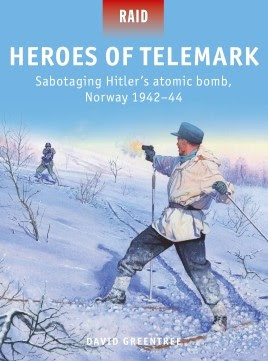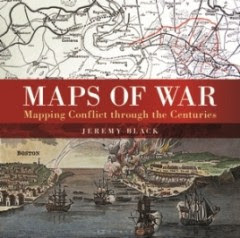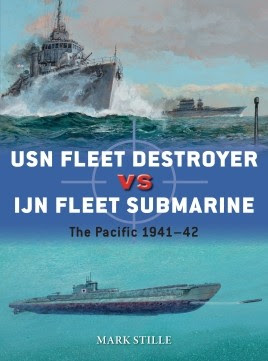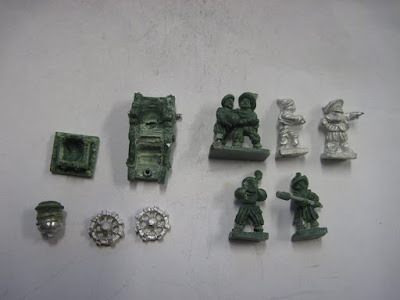Order Today
Run to the Sound of the Guns
From frozen mountaintops to dusty city streets and everything in between, Run to the Sound of the Guns is a compelling and deeply personal account of a husband and father who nearly lost his life 'leading the way' in America's secretive global wars.
Nicholas Moore served as part of an elite special operations unit at the fighting edge of the Global War on Terrorism. He served for over a decade with the US Army's 75th Ranger Regiment on the battlefields of Afghanistan and Iraq.
In Iraq, Nicholas participated in the rescue of Private Jessica Lynch, hunted Iraq's Most Wanted and experienced brutal street combat, including 160 night-time missions over one 90-day deployment in the insurgent stronghold of Mosul. While serving in Afghanistan, he was also part of the search and rescue operation for Navy SEAL Marcus Luttrell (author of Lone Survivor), and was on the ground again when a Chinook helicopter was shot down resulting in the death of 38 men and one military working dog. It was the single greatest loss of special operations personnel to date.
Wings of the Rising Sun
In the Pacific War's early years, Japanese air power was dominant. The only way for the Allies to defeat their enemy was to know it. This made the task of maintaining productive intelligence gathering efforts on Japan imperative. Establishing Technical Air Intelligence Units in the Pacific Theatre and the Technical Air Intelligence Center in Washington DC, the Allies were able to begin to reveal the secrets of Japanese air power through extensive flight testing and evaluation of captured enemy aircraft and equipment. These provided an illuminating perspective on Japanese aircraft and aerial weapon design philosophy and manufacturing practice.
Fully illustrated throughout with a wealth of previously unpublished photographs, Mark Chambers explores Allied efforts to evaluate the strengths and weaknesses of Japanese air power during the war years, and how this intelligence helped them achieve victory in the Pacific.
Soviet T-54 Main Battle Tank
The menacing silhouette of the T-54 tank prowling down streets of Eastern European capitals or roaring across fields in massive exercises remains one of the most enduring images of Soviet power in the early years of the Cold War. Its sleek and unmistakable shape was a warning to any nation that wanted to stand against the USSR.
Yet all of this masked a flawed, outdated design, and when T-54s began to clash with the Western armoured vehicles in proxy wars in Southeast Asia and the Middle East they were found to be on the losing side of many of the battles.
Containing 130 stunning contemporary and modern photographs, and written by two experts on Soviet armour, this authoritative book tells the complete story of the T-54, one of the most widely produced tanks of all time, including many previously unheard of variants.
Roman Heavy Cavalry (1)
From the army of Marc Antony in the 1st century BC, Roman generals hired Oriental heavy armoured cavalry to serve in their military alongside the legions. These troops, both from the northern steppes and the Persian frontiers, continued an ancient tradition of using heavy armour and long lances, and fought in a compact formation for maximum shock effect. They were quite distinct from conventional Roman light cavalry, and they served across the Empire, including in Britain. They became ever more important during the 3rd century wars against Parthia, both to counter their cavalry and to form a mobile strategic reserve.
Displaying these impressive and imposing cavalry units using vivid specially commissioned artwork, this first book in a two part series on Roman Heavy Cavalry examines their use over the Imperial period up to the fall of Western Empire in the 5th century A.D.
Heroes of Telemark
In May 1941, the Norwegian Section of SOE received a dossier warning of the dangers of a hydroelectric fertiliser plant in Norway. Vemork produced heavy water, an essential part of making plutonium for nuclear weapons. When the Germans overran Norway the entire stock had been smuggled out of the country, but the plant was intact and soon producing heavy water again, destined for the German nuclear programme.
Despite the difficulties of getting to and operating in such a remote, hostile area, SOE decided it had to destroy the plant. Six ski-borne commandos had the task of slipping past 300 heavily armed guards and passing through a ravine the Germans thought impassable.
Fully illustrated with stunning new commissioned artwork, this is the thrilling story of the daring Norwegian-led SOE raid that prevented Hitler from building an atomic bomb.
The Sterling Submachine Gun
Designed by a motorcycle racer turned small-arms engineer, George Patchett, the submachine gun that eventually became known as the Sterling was developed during World War II. Some suggest it first saw action during Operation Infatuate with No. 4 Commando, before becoming fully adopted by the British Army in 1953 as the Sterling Machine Carbine (L2A1).
It was centre stage for many of Britain's post-colonial conflicts from Malaya to Kenya and from Yemen to Northern Ireland. The silenced L34A1 Sterling-Patchett entered service in 1966 and first saw action deep in the jungles of Vietnam in the hands of the elite special forces of Australia, New Zealand and the United States during prisoner snatches and reconnaissance patrols.
Employing first-hand accounts and painstaking technical analysis, this engaging account features carefully selected archive photography and specially commissioned colour artwork depicting the submachine gun that armed British and other forces for nearly 60 years.
B-25 Mitchell Units of the CBI
Flying from and between bases in China and India, the B-25s bombed every type of Japanese target during World War 2 in the China-Burma-India (CBI) Theatre, ultimately dropping more ordinance than their larger four-engined B-24 Liberator brethren.
Mitchell bombers took on the task of disrupting the flow of Japanese supplies to the frontlines at medium ranges, bombing Japanese supply centres, railway depots and bridges. It was in this last capacity that the B-25 established a unique role as a ‘bridge-buster'. This provided significant support for the British Fourteenth Army as they advanced into Burma.
Fully illustrated with detailed cutaway artwork, this book tells the important, yet forgotten story of B-25 operations in the CBI Theatre and the important role that this aircraft played on the road to victory.
Empire of the Seas
The year 1588 marked a turning point in our national story. Victory over the Spanish Armada transformed us into a seafaring nation and it sparked a myth that one day would become a reality - that the nation's new destiny, the source of her future wealth and power lay out on the oceans. This book tells the story of how the navy expanded from a tiny force to become the most complex industrial enterprise on earth; how the need to organise it laid the foundations of our civil service and our economy; and how it transformed our culture, our sense of national identity and our democracy.
Re-issued in trade paperback format Brian Lavery's narrative explores the navy's rise over four centuries; a key factor in propelling Britain to its status as the most powerful nation on earth, and assesses the turning point of Jutland and the First World War. He creates a compelling read that is every bit as engaging as the TV series itself.
Maps of War
There is little documented mapping of conflict prior to the Renaissance period, but, from the 17th century onwards, military commanders and strategists began to document the wars in which they were involved and later, to use mapping to actually plan the progress of a conflict. Using contemporary maps, this sumptuous new volume covers the history of the mapping of war on land and shows the way in which maps provide a guide to the history of war.
Content includes:
The beginnings of military mapping up to 1600 including the impact of printing and the introduction of gunpowder
The seventeenth century: The focus is on maps to illustrate war, rather than as a planning tool and the chapter considers the particular significance of maps of fortifications.
The eighteenth century: The growing need for maps on a world scale reflects the spread of European power and of transoceanic conflict between Europeans. This chapter focuses in particular on the American War of Independence.
The nineteenth century: Key developments included contouring and the creation of military surveying. Subjects include the Napoleonic Wars and the American Civil War
The twentieth century including extended features on the First and Second World Wars including maps showing trench warfare and aerial reconnaissance. Much of the chapter focuses on the period from 1945 to the present day including special sections on the Vietnam War and the Gulf Wars.
Tsushima 1905
Japan was closed to the world until 1854 and its technology then was literally medieval. Great Britain, France and Russia divided the globe in the nineteenth century, but Japan was catching up. Its army and navy were retrained by Western powers and equipped with the latest weapons and ships. Japan wanted to further emulate its European mentors and establish a protectorate over Korea, yet Japanese efforts were blocked by Imperial Russia who had their own designs on the peninsula.
The Russo-Japanese War started with a surprise Japanese naval attack against an anchored enemy fleet still believing itself at peace. It ended with the Battle of Tsushima, the most decisive surface naval battle of the 20th century. This gripping study describes this pivotal battle, and shows how the Japanese victory over Russia led to the development of the dreadnought battleship, and gave rise to an almost mythical belief in Japanese naval invincibility.
USN Fleet Destroyer vs IJN Fleet Submarine
Leading up to the Pacific War, Japanese naval strategists believed that a decisive fleet engagement would be fought against the United States Navy. Outnumbered by the USN, the Imperial Japanese Navy planned to use its large, ocean-going submarines to chip away at its opponent before the grand battle. In order to accomplish this, the IJN's submarine force was tasked to perform extended reconnaissance of the USN's battle fleet, even in port, and then shadow and attack it.
For their part, the USN was fully aware of the potential threat posed by Japanese submarines, and destroyer crews were trained and equipped with modern anti-submarine weapons and tactics to screen the battle fleet.
Challenging the assumption that Japanese submarines were ineffective during the Pacific War, this fully illustrated study examines their encounters with the US Navy, and the successes and failures of American destroyers in protecting their capital ships.
Bolt Action: Campaign: Battle of France
The Battle of France saw German forces sweep across the Low Countries and towards Paris, crushing Allied resistance in just six weeks. From Fall Gelb and the British withdrawal from Dunkirk to the decisive Fall Rot, this new supplement for Bolt Action allows players to take command of the bitter fighting for France, and to refight the key battles of this campaign. Linked scenarios and new rules, troop types, and Theatre Selectors offer plenty of options for novice and veteran players alike.
Osprey Publishing Ltd





































